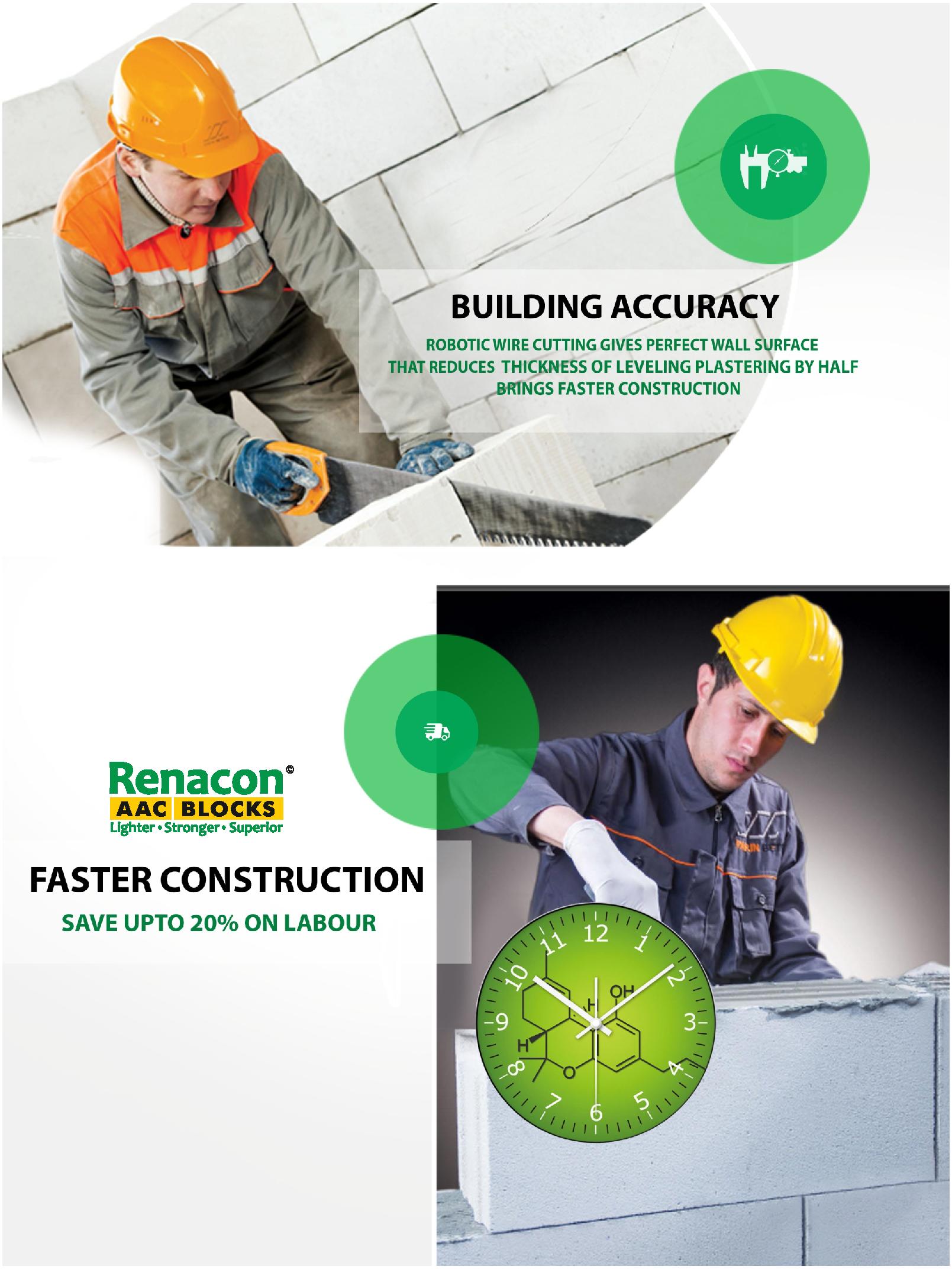
Fire Resistant
- Non-combustible And Fire Resistant up to 1600 degree Celsius
- Fire Resistant about 2 to 6 hours depending on the thickness of the wall

Acoustic Insulation
- Superior Sound absorption quality due to porous structure of blocks
- Offers Sound Attenuation of about 42 dB (decibels) blocking all sounds and disturbances.

Thermal Insulation
- Tiny air pours and thermal mass of blocks provides excellent Thermal Insulation
- Reduces heating and air conditioning costs of a building

Building Accuracy
- Blocks can be easily cut, drilled, nailed, milled and grooved to fit individual requirements
- Available in Custom Sizes
- Simplifies Sanitary and Electrical installations such as pipes or ducts which can be installed after the main construction is complete.





















 The Autoclaved Aerated Concrete blocks ever since its introduction in the Indian market have witnessed a massive turn around. The shift in focus from Red Bricks or the Clay bricks to the AAC blocks reflects a strong shift in the tide. The construction sphere specifically in India for long now have been dwelling with a choosy list of brick components and they being,
The Autoclaved Aerated Concrete blocks ever since its introduction in the Indian market have witnessed a massive turn around. The shift in focus from Red Bricks or the Clay bricks to the AAC blocks reflects a strong shift in the tide. The construction sphere specifically in India for long now have been dwelling with a choosy list of brick components and they being, have been the predominant building material used for the masonry construction. These bricks over the years have come out in diverse forms, textures, and sizes owing to the varied needs of the customers. The Industrial Revolution, was the time period when the brick production skyrocketed to greater heights with the increase in market demand. This was exactly when the mechanised form of mass brick production came in to practice. From then on, the red bricks and clay bricks never looked back until the so-called newbie –
have been the predominant building material used for the masonry construction. These bricks over the years have come out in diverse forms, textures, and sizes owing to the varied needs of the customers. The Industrial Revolution, was the time period when the brick production skyrocketed to greater heights with the increase in market demand. This was exactly when the mechanised form of mass brick production came in to practice. From then on, the red bricks and clay bricks never looked back until the so-called newbie –






khader –
eco friendly and light weight its good